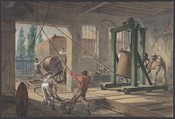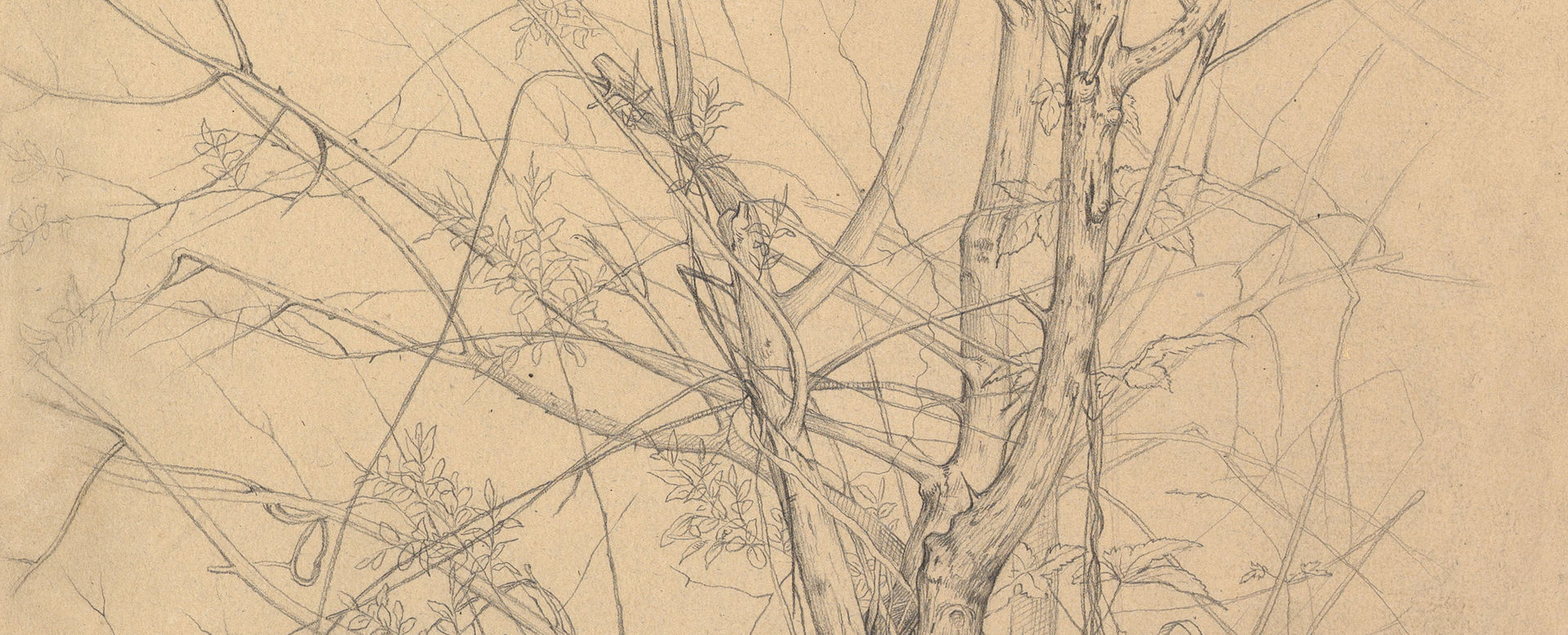The Reels of Gutta-percha Covered Conducting Wire Conveyed into Tanks at the Works of the Telegraph Construction and Maintenance Company, at Greenwich
Robert Charles Dudley British
Not on view
One of the 19th century's great technological achievements was to lay a telegraphic cable beneath the Atlantic, allowing messages to speed back and forth between North America and Europe in minutes, rather than ten or twelve days by steamer. An initially successful attempt in 1858, led by Cyrus W. Field and financed by the Atlantic Telegraph Company, failed after three weeks. Two working cables were finally laid in July and September 1866, the result of repeated efforts by the indefatigable Field, a cadre of engineers, technicians, and sailors, two groups of financial backers, and significant help from the British and United States navies. This watercolor by Dudley shows specially insulated wire cable being prepared at Greenwich, east of London on the Thames. A core of seven strands of pure copper wire was insulated by gutta-percha, a tropical resin, and adhesive, and then covered with preserved hemp twisted with steel wire then an outer layer of manila yarn. This composite line weighed 4,000 pounds per nautical mile and took nearly a year to manufacture. Part of a series documenting the long, arduous process, this image was reproduced as a color lithograph in William H. Russell's 1866 book "The Atlantic Telegraph" (92.10.100 and 61.536.5). In 1892 Field donated art works by Dudley, a copy of Russell's book, commemorative medals, memorabilia, and specimens of cable to the Museum.
Due to rights restrictions, this image cannot be enlarged, viewed at full screen, or downloaded.



